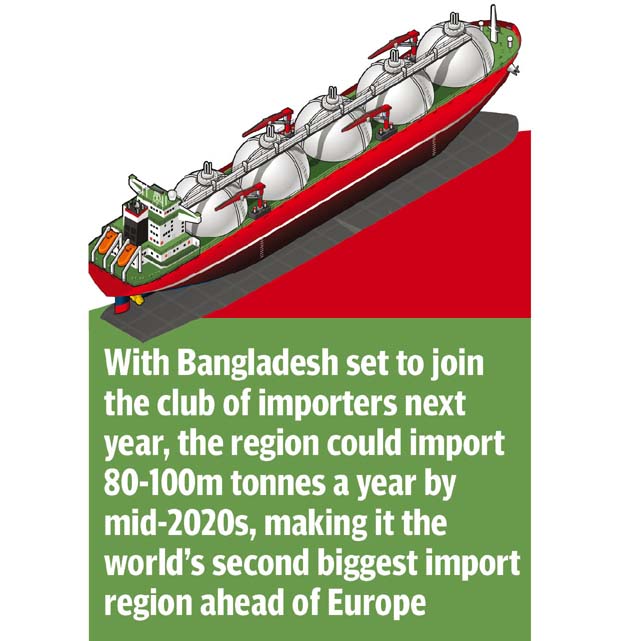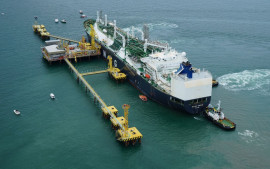
Only India and Pakistan currently import LNG in South Asia, taking in a combined 25 million tonnes or 8% of global demand last year.
But with a fast growing population, strong economic growth and soaring energy demand, more import projects are being developed, led by Pakistan and Bangladesh.
“Both countries already have extensive gas infrastructure due to legacy production from domestic gas fields,” said Chong Zhi Xin, principal Asia LNG analyst at energy consultancy Wood Mackenzie.
Russia, India eyeing to tap Pakistan gas market
“As domestic production has failed to keep up with demand, both markets are a natural fit for LNG imports.”
Pakistan started importing LNG in 2015 after developing its first terminal within schedule and budget. A second is about to become operational and a third is expected to be completed next year.
With Bangladesh set to join the club of importers next year, the region could import 80-100 million tonnes a year by mid-2020s, analysts said, making it the world’s second biggest import region, ahead of Europe.

Bangladesh boom
Bangladesh, a country of over 160 million people, could import 2,500 million cubic feet per day (mmcfd) of LNG, equivalent to around 17.5 million tonnes per year, by 2025, said Nasrul Hamid, Bangladesh’s State Minister for Energy and Power.
With its own gas reserves depleting and seeking to almost double power capacity to 24,000 megawatts by 2021, Bangladesh is tapping cheap and plentiful supplies on world markets and investing heavily in LNG.
Several floating storage and regasification units (FSRU), the first developed by private US company Excelerate Energy, are due to begin importing cargoes, starting in 2018.
“We are working on two FSRUs from which gas will start flowing (by) next July,” Hamid said. Both FSRUs will be deployed off Moheshkhali Island in the Bay of Bengal in the southeast of the country. They will have a combined capacity of 7.5 million tonnes a year.
Two more FSRUs are planned, though no exact dates have been finalised. In addition, state-run Petrobangla signed a preliminary deal with India’s Petronet in December to set up an onshore terminal to regasify a further 7.5 million tonnes of LNG a year on Kutubdia Island, just to the north of Moheshkhali, at a cost of $950 million.
Pakistan shelves $2b LNG project
“By 2025, depending on our national demand, we will import anywhere from 2,000 to 2,500 mmcfd of gas,” Hamid said. Those imports would add to plans from India and Pakistan to buy 50 million and 30 million tonnes of LNG per year, respectively, by mid-2020s.
“LNG imports in South Asia are expected to rise four-fold from 22 million tonnes per year in 2016 to over 80 million tonnes per year by 2030,” said Mangesh Patankar, head of Asia-Pacific business development at energy consultancy Galway Group.
Should all plans in the region go ahead and Sri Lanka also starts imports, this figure could rise to 100 million tonnes, industry project data shows. That would push South Asia’s demand ahead of Europe as the world’s second biggest LNG import region by 2020, though it would still lag North Asia’s 150 million tonnes of annual imports.
The boom in demand will help ease oversupply in LNG markets, which have resulted in a more than 70% price fall from their 2014 peaks to $5.75 per million British thermal units.
Published in The Express Tribune, August 3rd, 2017.
Like Business on Facebook, follow @TribuneBiz on Twitter to stay informed and join in the conversation.









































COMMENTS
Comments are moderated and generally will be posted if they are on-topic and not abusive.
For more information, please see our Comments FAQ